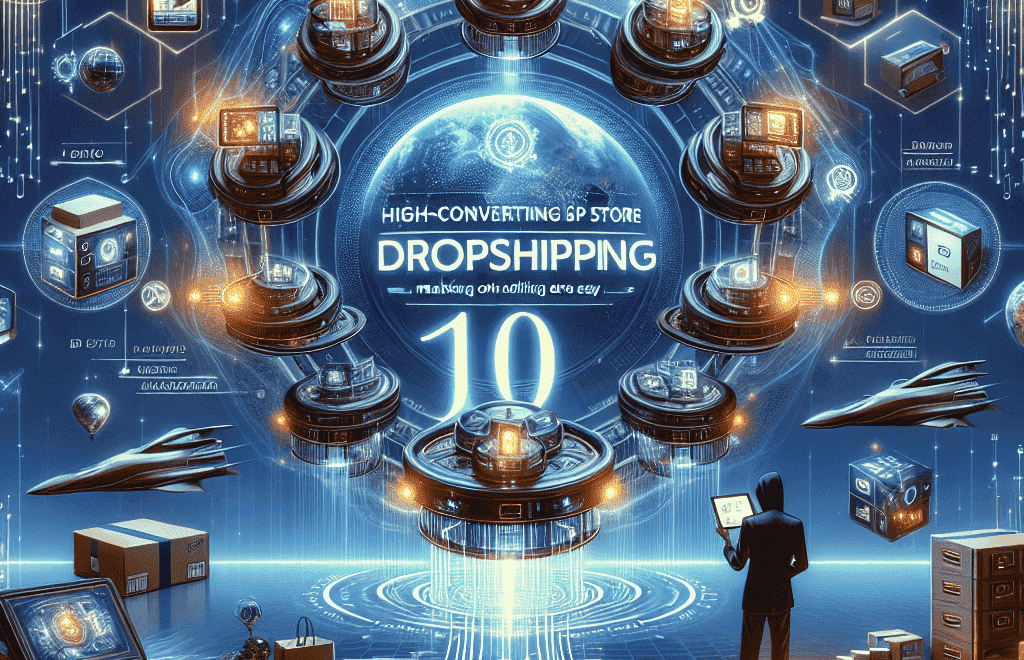10 Dropshipping Store Templates That Practically Sell for You
Let’s be honest—if you’re starting a dropshipping store from scratch, you’ve already got enough on your plate. Between researching products, chasing suppliers, and figuring out how to actually get customers, the last thing you want is to be stuck piecing together a website that looks like it came out of a time machine.
That’s why picking the right website template isn’t just convenient—it’s kinda non-negotiable if you want to compete online.
But here’s the kicker: not all templates are created equal. I’ve seen gorgeous stores flop because their theme was all style, no substance. And on the flip side, even average-looking products sell like crazy with the right layout and structure driving the user experience.
So, if you’re wondering which dropshipping templates are actually worth your time—and won’t make visitors bounce faster than an over-eager pop-up—stick around.
What Even Is a Dropshipping Template, Anyway?
A dropshipping website template is basically a shortcut. It’s a pre-built layout for your eCommerce store that includes essentials like product listings, shopping carts, and checkout flows.
Why it matters:
- ✅ Saves hours of frustration with code
- ✅ Built with conversions in mind
- ✅ Fully mobile-optimized
- ✅ Easily integrates with Shopify, Printful, Oberlo, and more
In a model where you lack direct control over inventory and fulfillment, your site is the one thing you actually own. Get it right, and you’re already way ahead.
What Makes a Template Actually Good?
I’ve tried dozens of themes, and here’s what separates a winner from one that just looks pretty:
- ⚡ Super-fast loading speeds
- 🧭 Clear, intuitive navigation
- 🖼️ Product-focused layout
- 📱 Mobile-first design (critical in 2024)
- 🎨 Easy to customize
- 🔍 SEO-friendly structure
Remember: a good template doesn’t just look good—it works like a sales machine.
10 Dropshipping Templates That Actually Work
- Debutify (Shopify)
Clean, fast, and built to convert. Comes with built-in upsells, countdowns, and sticky carts.
Great for: Fashion, accessories, lifestyle. - Minimal (Shopify)
Don’t let the name fool you—it’s clean but effective. Keeps your products in the spotlight.
Great for: Jewelry, skincare, wellness. - Booster Theme (Shopify)
Packed with marketing features out of the box. Conversions are its currency.
Great for: Gadgets, health tech, viral items. - Ella (Shopify Theme Marketplace)
Visually striking with endless layout options. No designer required.
Great for: Baby products, boutique brands, cosmetics. - Porto (WooCommerce)
Fast, flexible, and SEO-friendly—ideal for WordPress lovers.
Great for: Niche stores, digital products, SEO blogs. - WoodMart (WooCommerce)
Polished and professional, ready to compete with big brands.
Great for: Furniture, decor, complex storefronts. - Shoptimized (Shopify)
A conversion beast. Built-in urgency, trust factors, and speed.
Great for: Impulse buys, fitness gear, TikTok favorites. - Flatsome (WooCommerce)
Reliable, fast, and flexible. A WooCommerce favorite for a reason.
Great for: Tech, apparel, multi-product collections. - Avone (Shopify)
Premium look with lots of homepage demos. Perfect for expressive brands.
Great for: Boutique fashion, designer-inspired lines. - Shopkeeper (WooCommerce)
Clean, intuitive, and drag-and-drop easy. Beginner friendly.
Great for: Unique niches, blog-store hybrids.
Free vs. Paid Templates: What’s Right for You?
If you’re just testing the waters, free themes like Debut or Minimal are solid starting points. But if you’re serious about making your store your main gig, paid templates are usually more than worth the investment. They come with better features, smoother performance, and ultimately, more sales potential.
How to Customize Without Wrecking Your Site
Nothing kills conversions faster than a clunky mess of a site. Here’s how to keep it clean:
- 🎯 Stick to 2-3 brand colors
- 🔠 Use consistent fonts throughout
- 📸 Upload sharp, professional product images
- 🗺️ Keep navigation simple—3 clicks max to checkout
- 📱 Always design mobile-first
- 🛒 Test your checkout process from start to finish
“You can’t build a reputation on what you’re going to do.” — Henry Ford
FAQs
Q: Do I need to know how to code?
Nope. Most modern themes are drag-and-drop or have easy-to-use builders.
Q: Can I change templates later?
Yes, but it can require a complete site overhaul. Choose wisely from the start.
Q: Are these mobile-friendly?
Absolutely. Every template listed is optimized for mobile users.
Q: Shopify or WooCommerce?
Shopify is quicker and more beginner-friendly. WooCommerce offers more flexibility and SEO power—ideal for the tech-savvy.
The Bottom Line
Your store’s design isn’t just cosmetic—it’s strategic. It’s your brand’s first impression, your silent salesman, and the difference between a bounce and a buy.
Invest a little time upfront to choose the right template. Whether you’re bootstrapping or scaling fast, there’s a perfect fit waiting to elevate your store—and your sales.
Need help picking the right one or want it set up for you? Reach out—we’ll help launch your store with zero guesswork and all the gains.

